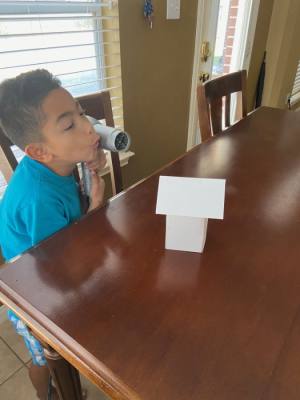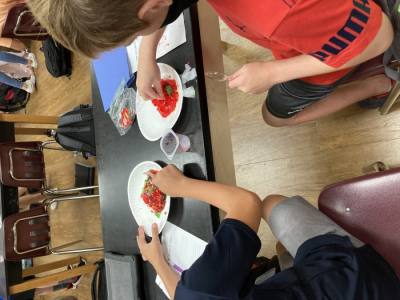Students in kindergarten through eighth grade can participate both in-person and online in enhanced science programs at various CCISD campuses. Program liaisons said the program activities and culture lead to high-achieving students with an increased appreciation for STEM.
District officials said the magnet programs were implemented when attendance began dropping off at some schools and when STEM education, or instruction in the fields of science, technology, engineering and math, was being talked about more and more across the nation. Magnet schools and programs focus on a specific area of study.
Sixth- through eighth-graders have the opportunity to participate in the science magnet curriculum on campus or through Clear Connections at Seabrook and Brookside intermediate schools. Seabrook’s program, the original one in the district, is in its 28th year, and Brookside's is in its third.
Science magnet students begin and end their school day an hour earlier. District officials said the program draws on the talents available through local NASA scientists whenever possible for things like speaking engagements. Science magnet students also take a scientific methods course, in which they learn to create and perform experiments and present projects.
The exclusive field trips typically available to science magnet students are on hold due to the COVID-19 pandemic. Brookside Intermediate Program Liaison Joey Segura said educators have found ways to quickly adapt and offer similar experiences through screens with the help of organizations like the Houston Museum of Natural Science and the Galveston Bay Foundation.
“We had to be able to pivot a little and really rely on those virtual field trip opportunities,” he said. “While we couldn’t take them out to the experiences, we relied on the community partners to bring those experiences to us.”
Moreover, not all learners are on campuses to participate in-person. Segura and Becca Rolater, the science magnet liaison for Seabrook Intermediate, said they have worked to build community through virtual activities, such as a guest speaker series and app-based team building games. Despite this year’s challenges, program retention remains high due to what Rolater called students' “intrinsic motivation” to continue exploring STEM concepts.
“Students right now are really wanting to latch onto something that is outside of their home,” Rolater said, with particular respect to virtual learners. “They just need that interaction with their friends.”
Despite the lack of field trips, remote and in-person learners are thinking outside the box to apply STEM concepts. All students use low-tech, simple materials for their designs and projects—such as items from recycling bins—because the goal is simply to build the creative process, program liaisons said.
The program provides an important avenue for middle school students to build themselves up through peer interactions, Rolater said.
“It’s [important] to really make sure that these kids feel welcome and that these kids feel this is a safe place, regardless of [learning environment],” she said. “We want students to understand and to see STEM in and out of the classroom.”
The skills learned translate to other parts of students’ lives, such as their self-confidence and work ethic, said Jan Larsen, former science magnet liaison for Seabrook Intermediate. While the program is not solely for straight-A students, the work science magnet students produce often stands out from that of their peers, particularly in regional and state science fairs, Larsen said.
Magnet program applications for the 2020-21 school year will reopen in January 2021.
Younger students can participate in the Elementary-STEM program at Ed White and Hall elementary schools, where the programs are in their seventh and third years, respectively. Ed White Program Liaison Laura Mackay said the district pioneered its engineering lessons at Ed White and received positive responses.
Engineering, designing and critical thinking skills were previously not emphasized across the district, but every CCISD elementary school now incorporates engineering lessons into their curriculums, even non-E-STEM schools. The integration allows for every student to experience the kind of critical thinking, creativity and growth mindset Ed White and Hall students are exposed to each day, Mackay said.
Many of the same barriers faced by middle school students as they learn virtually are also present at the elementary level, she added: While a vast majority of parents are excited their children have the opportunity for enriched science lessons from home, some have said carrying out the experiments without a teacher present can be complex for students and parents alike.
“It’s not just 10 or 15 minutes a day of quick school,” Mackay said of the lessons. “It’s been tough to do hands-on science in general. ... Everyone’s stepping up as much as they can, and it’s not easy, but they’re doing it for the kids.”
Both E-STEM schools have the same motto: “Make mistakes, learn, redesign.” The motto, which aims to foster a different approach to problem solving, inadvertently becomes part of students’ psyche, Mackay said.
“If you love science, especially engineering, and you like to build, ... our [program] gives you a lot of opportunities you aren’t going to get on a regular campus,” Mackay said.








